
views
- Before undergoing surgery, consider the risks, talk over all your options with your doctor, discuss anesthesia with them, and follow all preparation instructions.
- Be prepared to answer health questions when you arrive for surgery, and expect a checkup after; get a friend to drive you home when you’re released.
- Recover from penile frenuloplasty with pain medication and plenty of fluids; avoid sexual activity and leave your stitches alone while the wound heals.[1]
- Expect discomfort after oral frenuloplasty; use salt water rinses and eat recommended foods while keeping the mouth as clean as possible.
Penile Frenuloplasty Surgery Prep

Consider the risks of surgery. All surgical procedures carry some risks, even those that are done in a physician’s office or an outpatient surgical center. Swelling and bruising are common following this type of surgery. In some rare cases, bleeding may be prolonged. An additional procedure may be needed to stop the bleeding. Infections are unlikely but possible, and can be treated with the use of antibiotics. Scarring of the skin tissue at the site of the surgery is possible.

Ask your doctor to explain your options. Circumcision, or other procedures specific to your condition, may correct the problem for penile conditions. One study showed that 15% to 20% of men that were advised to have a circumcision, and chose to have the frenuloplasty procedure performed, went on to have circumcision done later. The average time to circumcision was 11 months following the initial procedure.

Stop smoking. Smoking significantly contributes to complications after the procedure. Stop smoking as soon as possible before your procedure. Even just a few days prior to the surgery can have a positive impact on your recovery. The sooner you quit before the procedure, the better the outcomes. Smoking interferes with your body’s ability to heal.

Talk to your doctor about anesthesia. Many surgeons prefer to perform this type of surgery with the person under general anesthesia. General anesthesia means you will be asleep during the operation. A spinal block, which is an injection that goes into your back and numbs you from about your waist and below, is also sometimes used. A penile block is sometimes used, although it is not a common way to provide anesthesia for this procedure. A penile block is an injection that numbs only your penis. IV sedation is another option. IV sedation is a type of anesthesia that puts you into a "twilight" state. It uses medications that are not as strong as drugs used for general anesthesia, so you will not be as deeply asleep.
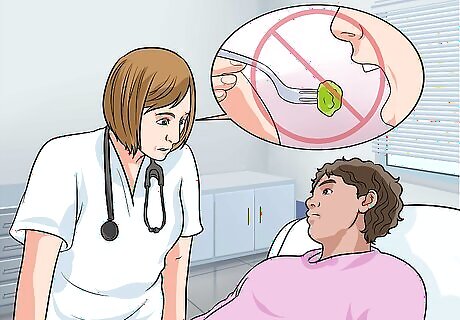
Follow the instructions provided by your surgeon. Since general anesthesia is used in most cases, specific instructions will be provided that you must follow before reporting for your surgery. Common guidelines recommended for people that will be going under general anesthesia include the need to avoid eating or drinking anything, including water and chewing gum, for a predetermined time before your surgery. This step is usually advised to begin at midnight, the night before your surgery.

Take a bath or shower. The time you should bathe or shower, and the types of products you should use, will be part of the instructions provided. Some surgeons prefer that certain types of soaps be used prior to surgery. One example is a skin cleanser called chlorhexidine that helps to clean the skin more thoroughly than regular soap to avoid infections. Your doctor will advise you as to the appropriate products to use in your bath or shower, as well as the time you should do so.
Oral Frenuloplasty Surgery Prep

Understand the risks of surgery. As with any surgery, risks are involved. The most common problems that develop from oral frenuloplasty occur very rarely, but include the following: Excessive bleeding Infection at the surgical site Damage to the tongue Damage to the salivary glands Scarring of tissue at the surgical site Possible allergic reactions to the anesthesia drugs used Reattachment of the corrected frenulum after the surgery, causing recurrence of the original problem

Ask your doctor if the surgery is needed. This type of problem is usually identified at birth, and the corrective surgery is usually done in infants and young children. Your doctor can discuss other options with you, if there are any available. In some situations, the surgery is practically mandatory. When the frenulum is short and thick, and tethers the tip of te tongue to the floor of the mouth, the only option is to proceed with surgery to allow the tongue to move in a normal manner. The condition interferes with the infant or child’s ability to eat, suck from a bottle or breast, speak normally, swallow, as well as causing problems with normal tooth and gum development. Other problems may include difficulty with maintaining good oral hygiene, any activity that involves using the tongue like licking a cone of ice cream or licking the lips, and playing some types of musical instruments.

Have the surgery in your doctor’s office for infants. If your child is younger than three months, the procedure may possibly be performed in the doctor’s office. For infants and children older than three months, most doctors recommend general anesthesia.

Ask your surgeon about anesthesia. In children, and since the procedure takes only a few minutes, anesthesia done by a method called IV sedation may be appropriate. Your surgeon will advise you regarding the safest form of anesthesia to use in your child. Both general anesthesia and IV sedation have specific instructions that must be followed beginning at least eight hours before the procedure, and often start the night before. Follow the instructions provided by your doctor. The main directions will be regarding restrictions of both food and water for a specified number of hours before the procedure, usually beginning at midnight on the night before the procedure is scheduled. The procedure usually takes less than 15 minutes. Depending on the severity of the condition, a few stitches may be needed.
Arriving for Surgery
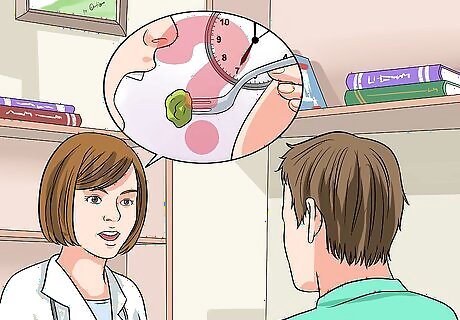
Expect to answer questions. Once you arrive at the hospital or surgical center, you will likely be asked to sign some forms stating you understand the procedure, you consent to have the procedure done, and forms about general hospital policies. You will also be asked some general health questions, including what time you last had something to eat or drink. Questions about any medications you may have taken in the past 24 hours will also be asked, and probably questions about recent smoking and alcohol use.

Change into a hospital gown. You will be given a certain type of hospital gown to put on, and asked to remove your clothing. Once properly dressed, you will be asked to get on a gurney, or rolling bed, and taken to an area just outside the operating room. At that point, an IV will be started and medication will be administered through the IV to help you to relax, and fall asleep. The actual surgery time is between 15 to 45 minutes in most cases of penile frenuloplasty, and usually less than 15 minutes for oral frenuloplasty.

Expect to see nurses when you wake up. You will wake up in the recovery room, and will have your temperature, blood pressure, breathing, and operation site checked by a nurse. Many people feel nauseous after receiving general anesthesia. If this is the case, let the nurse know and you will be given a medication to help. As you become more alert, you may experience some mild pain. Let the nurse know that as well, and you will be given medication for the pain.

Start eating and drinking. As soon as you feel up to it, start taking sips of water. When you are more fully awake, you may have something light to eat and drink as normal.
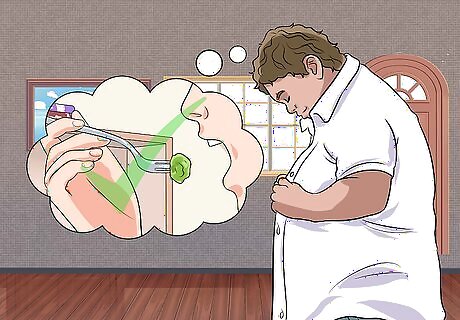
Prepare to go home. Most people go home on the same day of their surgery.> In some cases, an overnight stay may be the safest option. Your surgeon will make that decision. Once you are fully alert and awake from the anesthesia, are able to eat and drink without feeling sick, your wound is not bleeding, and you are able to pass urine normally, you can go home.

Have someone drive you home. You may not be permitted to leave the facility unless someone is with you to drive. Because you are mildly under the effects of residual anesthesia in your system, it is not safe for your to operate a moving vehicle. You should not drive for at least 24 hours after surgery, or until your surgeon gives you permission to do so.
Penile Frenuloplasty Recovery

Watch for complications. Let your doctor know if you develop prolonged bleeding or signs of an infection. Check your wound every day. If the discharge from the wound has an odor, or if the area appears to be swollen or reddened, contact your doctor. You may be developing an infection. Also let your surgeon know if you have any difficulty passing urine.
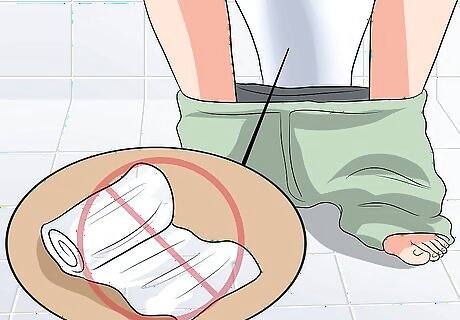
Do not apply dressings to the wound. It is normal for the surgical site to bleed or ooze a little over the first few days following surgery. The amount of blood or drainage is minimal, but obvious. You may notice small blood stains on your underwear or clothing for a few days following the procedure. While a dressing on the wound is not needed, if you are uncomfortable with the small amounts of blood or drainage staining your clothes or bedding materials, a small dressing can be used at your discretion. A small dressing, like a 4 x 4 gauze pad, can be lightly taped to the area to absorb any blood or drainage. Notify your doctor if the wound actively bleeds.

Have an adult with you. An adult should be with you at all times for the first 24 hours after your surgery. Do not lock personal privacy doors, such as the door to the bathroom or bedroom, for the first few days as you recover. The person with you may need to get to you quickly. Rest quietly at home. Recline in a comfortable chair or nap throughout the day in bed. If you feel faint or dizzy, lie down. Do not attempt to be physically active or operate any kind of machinery or heavy appliance for the first few days after your surgery. It may take two to three days to feel your normal energy level return.

Resume your normal diet gradually. Drink plenty of fluids, but avoid drinking beverages that contain large amounts of caffeine, such as tea or coffee. Moderate intake is ok. Eat lightly at first. Stick with soup, small meals, and sandwiches for the first few days. Avoid eating greasy, spicy, or heavy foods as this may make you feel sick. Do not drink alcoholic beverages for at least 24 hours after your surgery.

Take pain medication. If you feel any pain or discomfort, take acetaminophen products, or take the medication prescribed by your surgeon. Only take products your surgeon advised you would be ok. Always follow the directions on the product label or prescription container. Do not take more than what is recommended or prescribed.
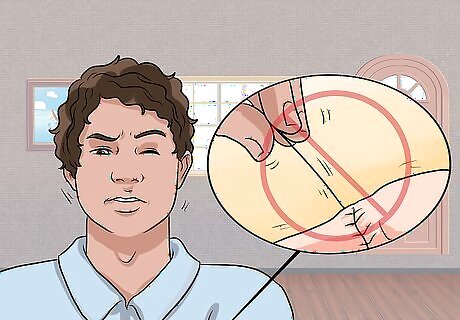
Leave your stitches alone. If any stitches are visible, do not pull them or cut them. Ask your doctor about the types of stitches used during your procedure. Most stitches used for this type of surgery are dissolvable, and are absorbed by your body in about three weeks. Some surgeons may still use the kind of stitches that require removal by the doctor. The types of stitches used may also require that you wait a few days before you bathe or shower. Ask your surgeon when you can resume your normal bathing or showering routine. Wear loose fitting clothes to avoid rubbing against your surgical site and causing irritation.

Avoid sexual activity. Your doctor will advise you on how long to avoid sexual activity. Most surgeons advise to refrain from all sexual activity for three to six weeks, depending on the extent of the surgery. If you wake up with an erection, try to get up, go to the bathroom, or walk around for a few minutes, to prevent the erection from continuing. Do not touch your genital area, other than to shower if allowed and to urinate, for 48 hours after the procedure.

Return to work. You may return to work as soon as you feel able. Most men are able to return to work within a few days. Some more involved procedures may require a longer recovery period, possibly as long as two weeks. Your surgeon will advise you when you can resume your normal daily routine. Allow yourself several days to feel more energetic and more like yourself. It takes time for the lingering effects of the anesthesia to wear off.

Resume exercise. You can return to your exercise program gradually starting several days after your surgery. Avoid activities that are irritating or put pressure on your penis for a longer period of time. For example, you should not return to bicycling for two weeks. Ask your doctor about returning to specific sports that require tight binding in your groin area, or may be irritating to your penis. Your doctor will guide you in returning to your sport.

Inform you doctor if pain continues. Once you have waited the appropriate amount of time before engaging in sexual activity, the experience should be pain-free. If you continue to have pain with an erection or with intercourse, talk with your doctor to discuss the results of the surgery and other options.
Oral Frenuloplasty Recovery

Expect some swelling and discomfort. It is normal for the person to experience swelling, pain, and discomfort following the surgery. The discomfort is usually mild and can be managed with over-the-counter medication as advised by your doctor. Be sure your surgeon advises you on the exact products to give your baby or young child to help with any discomfort. The instructions from your surgeon should be clear on the doses as well as the products that are ok to use. Do not use more medication than your doctor advised, and do not use any products other than those your doctor recommended.

Try to breastfeed your baby. If your baby is young and you were having trouble with breastfeeding, try to breastfeed soon after the procedure has been performed. The corrective surgery has immediate results. While there may be some swelling and discomfort, infants are often able to begin to breastfeed as soon as the procedure is completed.

Use salt water rinses. If your child is old enough, rinsing the mouth with salt water is often recommended. Your surgeon will provide you with specific instructions on how to minimize the risk of infection, and how to use any recommended products in young children.

Keep the mouth area as clean as possible. Assist your child with your normal routines of oral hygiene. Normal brushing and rinsing is recommended to keep the mouth area clean and help prevent infection. Avoid touching the surgical site with the toothbrush, or with fingers, in order to minimize irritation and prevent infection. If stitches were used, they were most likely dissolvable. In some cases traditional sutures are used which will require a scheduled appointment with the surgeon to have them removed.

Provide foods and beverages as directed. Your doctor will advise you as to specific foods, if any, your infant or child should avoid for any amount of time. Follow the instructions provided by your doctor. Follow the directions provided by your surgeon in cleaning the mouth area after eating and drinking to prevent infection.

Schedule appointments as recommended by your surgeon. Depending on the age of your child, it may have been recommended that you follow-up with speech therapy. The condition is called being tongue-tied for several reasons including limitations in speaking. Your child may have learned how to make sounds and words in ways that are not normal, in an effort to communicate. Working with a speech therapist can help to correct any speech deficits and assist your child in learning to speak normally. Tongue exercises may be a part of strengthening the ability to speak correctly.




















Comments
0 comment